Four Days Left…
Posted by rtmsf on October 7th, 2007
Just a little reminder. Midnight (er, 8pm EDT) Madness cometh…


Just a little reminder. Midnight (er, 8pm EDT) Madness cometh…
We’ve let the news accumulate for a while, so without any further delay…

Predicted Order of Finish:
North
South
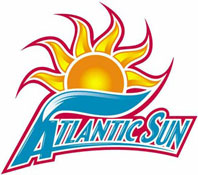
WYN2K. The Atlantic Sun has been an up and down league over the past decade. It spent much of the late 90s and early 2000s as a league hovering at the top of the low-majors (#19-#23 ranked conference most years). But the last two seasons it has fallen hard, finishing as one of the bottom four conferences in the computer rankings both years. Its OOC record (70-174, .287) the last three years is standard for a league at this level. Still, the NCAA typically shows some love to the conference champion, having given the A-Sun only five #16 seeds in 64/65-team era (and two of those were when the league received multiple bids) and peaking with a #11 seed in 2001 (Georgia St. defeated #5 Wisconsin in the first round). The league has earned a #14 or #15 seed each of the last six years, and we see no reason for this to end.
Predicted Champion. East Tennessee St. (#15 Seed NCAA). We see Murray Bartow’s ETSU squad (16-2 last season in the A-Sun) as the team to beat here. They return league POY Courtney Pigram and bring in former juco D2 POY Kevin Tiggs, a combo guard from whom big things are expected immediately. As a program, ETSU is no stranger to the NCAA Tournament, having made the Dance two of the last five years (as a member of the Southern Conference) and seven times overall.
Others Considered. The A-Sun North division is clearly the class of the league, containing two-time defending tourney champion Belmont and rising Lipscomb. Belmont is a system program predicated on efficient ball movement (#21 nationally in eFG%) and tight defense (#5 nationally in eFG% defense), but the loss of their two best post men (Boomer Herndon and Andrew Preston) makes it difficult for us to pick them again. Lipscomb is another intriguing choice if for no other reason than they’re hosting the conference tourney this year – oh, and they’re 24-2 at home during the last two seasons. Jacksonville engineered one of the all-time greatest turnarounds last year, going from one win in 2006 to fifteen in 2007, and while they won eight of their last eleven regular season games, we’re not ready to push them past the more experienced teams just yet.
Games to Watch. There’s likely only one A-Sun game probably worth watching this year.
RPI Booster Games. The A-Sun has thirty games against BCS opponents scheduled this year, and hopefully it can perform a little better than last year when it was 0-34. There are some opportunities against lower-tier BCS teams, however, in the following list of games:
Odds of Multiple NCAA Bids. <5%. It’s extremely unlikely that this is a two-bid league, but if any team was going to make it so, it would be ETSU. It would require domination of the league as well as a scintillating non-conference record before they lose in the conference tourney – we don’t see that happening.
Neat-o Stat. We have a couple for the A-Sun. First, North Florida last season enjoyed the dubious distinction of having the least efficent offense in the nation, scoring a mere 79.6 pts per 100 possessions. Secondly, Florida Gulf Coast (one of four transitional schools making the jump to D1 in the A-Sun) is the youngest D1 university in America, having opened its doors to students in 1997.
64/65-Team Era. In 26 appearances, the Atlantic Sun is 3-23 (.115) over the era, scoring the #11 over #6 upset mentioned above, #12 College of Charleston defeating #5 Maryland in 1997, and #14 Arkansas-Little Rock defeating #3 Notre Dame (Digger!) in 1986. That UALR team then took NC State to double OT in the next round before succumbing – that is the closest the league has gotten to the Sweet 16 in its history.
Final Thought. Belmont has gotten destroyed by Georgetown (80-55) and UCLA (78-44) in the last two years in the first round of the NCAA Tournament. It doesn’t appear that their style of play is conducive to pulling off an upset against a bigger, more athletic team. The league would have a much better chance at the first round upset if an uptempo, athletic team like ETSU earns the automatic bid.

The 2007-08 preseason blogpoll is out!
Contributors: March to Madness (administrator), NCAA Hoops Today, SEC Hoops: TGTBTD, March Madness All Season, A Sea of Blue, College Hoops Heaven, Rush the Court. All ballots archived here.
We’ll delve further into the reasons why we voted the way we did as the season preview moves along this month, but suffice it to say that we don’t have many major beefs with the way the preseason blogpoll turned out. We generally think Michigan St., Marquette, Texas and Duke are a little overvalued, while Indiana, Gonzaga and VCU are undervalued, but we were pretty much in lockstep with the group as to who the collective best five teams are.
FYI – our two ranked teams that were left on the outside looking in were Syracuse (#21) and Southern Illinois (#22).
This should be a lot of fun – we can’t wait to get the season started.
With respect to yesterday’s story about Gary Williams’ 0% graduation rate, Maryland has since responded with a press release stating that all ten of its players that qualified under the latest GSR ratings left school before graduation to pursue professional basketball careers. These players include:
In response, Gary Williams stated, “These people are very successful people. If you go to school to improve yourself economically, where have they failed? They make more than the average college graduate. Far more. If you’re judging them just based on getting a degree, then OK, they haven’t gotten a degree.”
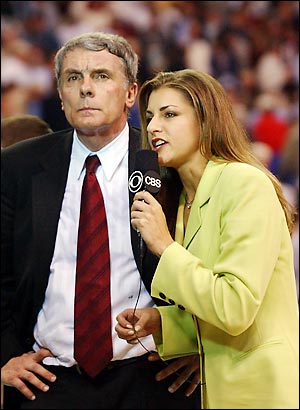
Betcha Bonnie Bernstein Got Her Degree
While we’re perfectly willing to hear GW out here, the fact of the matter is that only one of the above players left school early for the guaranteed millions (Wilcox). The other nine players exhausted their playing eligibility, and yet none of them graduated within the six-year window. Gary doesn’t see a problem with this?
He acts like Maryland was the only school to have its players move on to successful professional careers, whether here in the US or overseas. Sure, the Terps had some nasty teams in 2001 & 2002, but so did its archrival down on Tobacco Road (Duke) who still managed to graduate 67% of its players despite losing several to the League. Same thing with Michigan St. (67%), who went to three straight F4s from 1999 to 2001. Arizona (25%) and UConn (22%) were also loaded squads (Arizona – 1997 and 2001; UConn – 1999 and 2004), and yet neither of them pulled an aught – at least they graduated somebody.
Sorry, Gary, while we recognize that Maryland has improved its graduation rate in the interim (Maryland reports that four of last year’s six seniors graduated, and both of this year’s are on pace), we also have to recognize the reality that the program on your watch has consistently finished at the bottom of the ACC in this regard. It may not be at 0% for the duration of your career in College Park, but it’s painfully evident that your program places minimal emphasis on getting a degree. Shame on you.
Yesterday the NCAA released its latest graduation rate figures for all D1 athletes who entered school in the classes of 1997-2000. Unlike the federally-mandated graduation rate, the GSR (Graduate Success Rate) is more realistic for athletes – it gives each player six years to complete his degree and it does not count transfer students against a school (reflecting the reality of athlete puddle-jumping for playing time in D1).
Here are the NCAA’s key findings:
The latest GSR figures show that 77 percent of student-athletes who began college from 1997-2000 graduated within six years. That four-year graduation rate is unchanged from last year’s data and up from 76 percent two years ago.
The Graduation Success Rate for men’s basketball rose from 55.8 percent in 1995 to 63.6 percent in 2000, a 7.8 percent increase. Football increased from 63.1 percent to 66.6 percent for teams competing in the Bowl Subdivision and from 62 percent to 64.7 percent for teams competing in the Championship Subdivision. Baseball increased from 65.3 percent to 67.3 percent.

Gary is Too Busy to Worry About Graduation Rates
Since the NCAA doesn’t provide a sortable database of team information (or at least we can’t find it), we decided to quickly throw together some tables showing how the BCS schools performed in this cohort. Gary Williams should be especially proud of himself. Seriously, Gary, the best you can do with those Juan Dixon/Lonny Baxter teams is zero?!? Not even ONE player???
Thoughts.
We may have more thoughts on this later, but we’re heading for the airport at the moment, so it’ll have to wait.
Wow, Ms. Summit, you look like a new woman since your divorce!
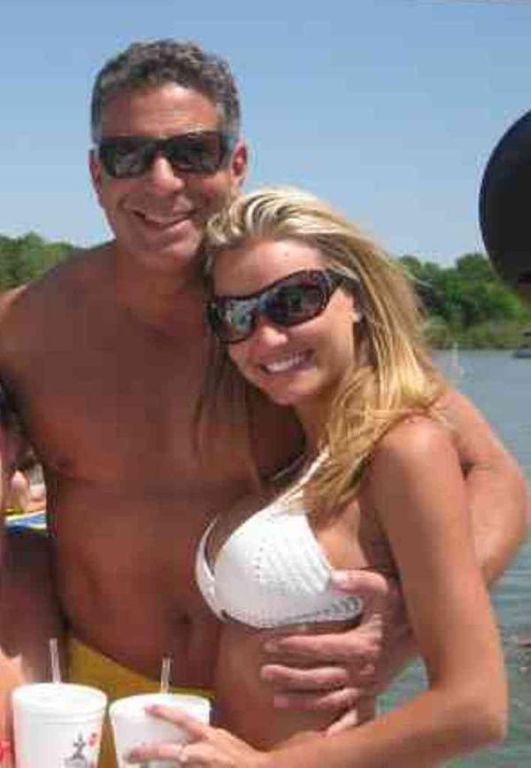
That hand is dangerously close to her… soft drink.

Rocky Top, Indeed!
(h/t to the Big Lead for uncovering these dandies)

Predicted Order of Finish.
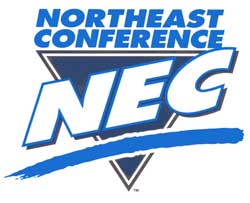
WYN2K. The NEC is currently going through a down cycle, but it hasn’t always been that way. In the 23-year history of the 65-team NCAA Tourney, the NEC has earned a non-#16 seed twelve times, getting a seed as high as #13 twice, in 1996 (Monmouth) and 1997 (LIU). Lately, though, the Northeast Conference has been stuck in #16 seed hell, having earned a bottom seed three years in a row (the 2006 appearance was in the PiG – Monmouth defeated Hampton). Over those last three years, the NEC’s OOC record is 94-215 (.304), featuring wins over Seton Hall (FDU – 2007), S. Illinois (Monmouth – 2006), Rhode Island (Wagner – 2006) and St. John’s (St. Francis (NY) – 2005). As you can see, it’s a better conference in general than the SWAC and MEAC, but it too typically cannot compete with first- and second-tier leagues.
Predicted Champion. Sacred Heart (#16 Seed NCAA). With twin NEC behemoths CCSU and Monmouth (6 of last 8 NCAA bids) likely to have down years, Sacred Heart is poised to take over the crown of the NEC. Five of the top seven players return from a team that finished winning seven of their last eight games before falling in a close one against CCSU in the NEC championship game.
Others Considered. Robert Morris returns a trio of high-scoring players for a team that was considered disappointing last year. Notable from a statistical oddity bent is that 6’0 guard Tony Lee shot a sizzling 67% on two-point FGs last year (150-224), which is an extremely high percentage for a small guard. Mt. St. Mary’s returns its leading scorer and assist man from a squad that earned a reputation of playing very hard on every possession. Wagner has everyone back from an 8-10 team that showed some promise midway through the conference season last year.
Games to Watch. Like a broken record, there will only be one NEC game on your television this winter.
RPI Booster Games. With only 18 games against BCS opponents, the NEC will have to make it count if they want to earn RPI points this year (the league was 1-20 vs. BCS teams in 2007). But there are a few opportunities for the league to take advantage of down years among several Big East teams (and one former Big East squad) if they catch them sleeping.
Odds of Multiple NCAA Bids. Again, zero.
Neat-o Stat. This isn’t a stat, but it’s neat-o nonetheless. Earl “The Goat” Manigault’s cousin, Ronald Manigault, is a junior college transfer at LIU this season. If he’s anything like his cousin (see video tribute below), LIU may become the And1 crowd’s underground team of choice this season.
64/65-Team Era. In 23 appearances, the NEC is actually the least successful conference of the era, going a measly 1-23 (.042) over this period. When you consider that the one win was Monmouth in 2006’s play-in game, it looks even worse. Despite getting two #13 and #14 seeds, the NEC has never been able to pull off the big upset.
Final Thought. The NEC champion has played well as a #16 seed vs. the #1 seed in two of its last three NCAA appearances, but simply wore down in the second half against a far superior team (2005 – CCSU down one at halftime to Illinois; 2006 – Monmouth down seven with six mins remaining vs. Villanova). In order to have a legitimate chance to win a game, the NEC champ will likely have to win enough nonconference games to improve its RPI enough to earn a #15 or #14 seed. Unfortunately, we don’t see a team capable of that in this year’s NEC.
Since we’ve been on the police blotter kick lately, we may as well continue with an epilogue to one of our previous taser stories. No, not the Florida John Kerry heckler, bro. Actually, we’re referring again to Pitt PG Levance Fields, who as you may recall, on Sept. 16 became involved in an altercation with an off-duty police officer:
According to Pittsburgh police reports, Fields, 20, was arguing with an unknown man and using obscene language outside Puro nightclub early on the morning of Sept. 16. An off-duty officer working security at the club on 19th Street said Fields appeared to have been drinking and ordered him to stop yelling. The officer said Fields punched him in the chest, grabbed his belt and reached for his gun, and the officer and his partner used a Taser gun to subdue and arrest Fields.
Let’s pick out the key piece of information here, in case you scanned over it.
Fields punched him in the chest, grabbed his belt and reached for his gun
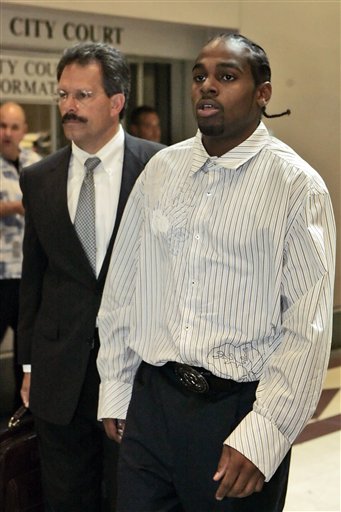
Fields Should Thank Pat O’Brien His Attorney
Now, we’re no expert in this sort of thing, but it seems like making a play for a cop’s gun is grounds for all kinds of nastiness to come down on you. So imagine our surprise when we heard this news from Pittsburgh:
Prosecutors agreed on Tuesday to drop charges of disarming a police officer, public drunkenness and aggravated assault, stemming from Fields’ alleged scuffle with a police officer on Sept. 16. A lesser charge of simple assault will stand. In exchange, Fields must spend nine months in the Accelerated Rehabilitation Disposition program and serve 50 hours of community service. If he completes the probation without incident, his record will be expunged, defense attorney Robert DelGreco Jr. said.
So Fields went from facing several felonies and a near-guarantee of jail time… to a lone misdemeanor of simple assault. And for what penance – fifty hours of community service? We think we did that much tree planting and mail sorting in one semester for alcohol violations in college.
Either Mr. DelGreco, Jr., is a master of advocacy on behalf of his clients, or the Allegheny County DA has Pitt season tickets. Considering the Panthers lost Aaron Gray and Levon Kendall from last year’s Sweet 16 squad, the potential loss of Fields could have made for a boring winter in the Steel City. As long as Fields can spare 1.28 hrs/week for community service over the next nine months and resist any and all urges to throw haymakers at officers, Pitt basketball should remain a viable entertainment option for Stephen A. Zappala, Jr., and his friends.

Predicted Order of Finish.

WYN2K. As bad as the SWAC is as a conference, the MEAC is only marginally better. But make no mistake – it IS better. Computer rankings for the last three years reflect that the MEAC lords over the SWAC, as it has won over twice as many OOC contests (70-268; .261) than its sister conference over the last three years. Yet, the MEAC champion is still a play-in game stalwart, finding itself in three of the last four PiGs and entering the NCAAs as a #16 seed each of the last five years. Exhibiting the same problem with OOC “guarantee games” as the SWAC, only Florida A&M and Delaware St. had overall winning records last year. Now, if the league could only keep its coaches out of trouble… Morgan St.’s Todd Bozeman (yes, that Todd Bozeman), SC State’s Jamal Brown and FAMU’s Mike Gillespie have all experienced legal trouble in the last year (Brown and Gillespie were fired).
Predicted Champion. North Carolina A&T (#16 Seed NCAA). Aggie Pride is back, as former Louisville champion (1980) and current A&T head coach Jerry Eaves continues to rebuild a program that was an NCAA regular in the 80s/early 90s (ten trips from 1982-95). Lightning-quick PG Steven Rush leads the charge for the 27th quickest tempo in the nation, and it doesn’t hurt that he has F Jason Willis and a cast of five other senior regulars from a team that made a late push in the MEAC last season.
Others Considered. Todd Bozeman’s Morgan St. squad intrigues us because his team improved leaps and bounds over 2006 based largely on the attitude shift he instilled into the program. Plus, he’s bringing the best recruiting class into the league this year. Hampton is also a team to watch because of Rashad West, a 6’1 playmaker who is likely the best player in the league. Coppin St. returns all five starters from an underachieving squad last year.
Games to Watch. Similar to the SWAC, there’s only one game that will matter in the MEAC.
RPI Booster Games. The MEAC plays 43 games against BCS conference opponents this year, and all but one is on the road. The key point here is that the home game is definitely winnable, as are a couple of other road games.
Odds of Multiple NCAA Bids. Zero. See SWAC.
Neat-o Stat. Don’t come to this league if you’re seeking beautiful offense. Nine of its eleven teams last year rated in the bottom 20% of teams nationally for offensive efficiency, and three of its teams (UMES, Howard, Norfolk St.) earned the ignoble distinction of being the least efficient defensive teams in the nation.
65-Team Era. Counting PiGs, the MEAC is 3-22 overall, with two trips to the second round – Hampton (#15) over Iowa St. (#2) in 2002, and Coppin St. (#15) over South Carolina (#2) in 1997. The MEAC is responsible for two of the only four #15 over #2 seed wins in history.
Final Thought. At least the MEAC isn’t the SWAC, right?